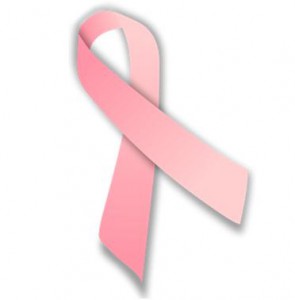Posted on behalf of Ru Bains, assistant editor for Genome Medicine
 Breast cancer is the most common cancer in women worldwide, and it is the second most common in both sexes combined, affecting over 1.3 million women and over 200,000 men every year. Survival rates vary across the globe and range from 40% in low-income countries to 60% and 85% in middle- and high-income countries, respectively. Differences in survival rates between high- and low-income countries is in part due to nationwide screening programmes in high-income nations, which have been very effective at detecting the disease at early stages.
Breast cancer is the most common cancer in women worldwide, and it is the second most common in both sexes combined, affecting over 1.3 million women and over 200,000 men every year. Survival rates vary across the globe and range from 40% in low-income countries to 60% and 85% in middle- and high-income countries, respectively. Differences in survival rates between high- and low-income countries is in part due to nationwide screening programmes in high-income nations, which have been very effective at detecting the disease at early stages.
Treatment guidelines for breast cancers vary across countries, but will involve one, or a combination of surgery, chemo-, hormone- and/or radiotherapies. The use of adjuvant chemotherapy is particularly beneficial for patients who are at high-risk of recurrent or metastatic disease. However, in patients with low- or intermediate-risk, the effect of adjuvant chemotherapy on the long-term survival of patients is minimal, meaning that patients often suffer adverse side effects unnecessarily. Therefore, an important research question is how to accurately stratify patients into high-, intermediate- or low-risk categories for relapse, metastasis, or disease recurrence, to ascertain whether they are likely to benefit from adjuvant chemotherapy.
A recent study published in Genome Medicine by the team of Joe Gray outlines a novel method for identifying biomarkers using a Random Forest Risk Score algorithm that can predict the likelihood in the ten-year survival of breast cancer patients. Using large and carefully curated datasets from nine independent studies, the authors identified gene signatures that correlated significantly with estrogen receptor-positive and herceptin-negative breast cancers. Perhaps surprisingly, from genome-wide analyses, they demonstrated that a relatively small gene set comprising eight key biomarkers could sufficiently predict the 10-year survival rates for this cancer subtype. The clinical significance of the work cannot be understated; the authors found that their method for predicting survival outperformed existing FDA-approved genotype tests ONCOTYPE Dx and AURKA. This suggests that the Random Forest Risk Score algorithm can accurately identify patients who would most benefit from adjuvant chemotherapy.
A diagnosis of breast cancer is devastating, but it is encouraging to know that research has significantly improved survival outcomes since the 1970s. The results from the study by Griffith et al. add to the ever-increasing body of research that is likely to guide the treatment of breast cancers for individual patients within the next ten years. This makes the research study particularly pertinent in light of breast cancer awareness this month and will ultimately identify patients that are likely to survive and help to improve their quality of life.
Comments